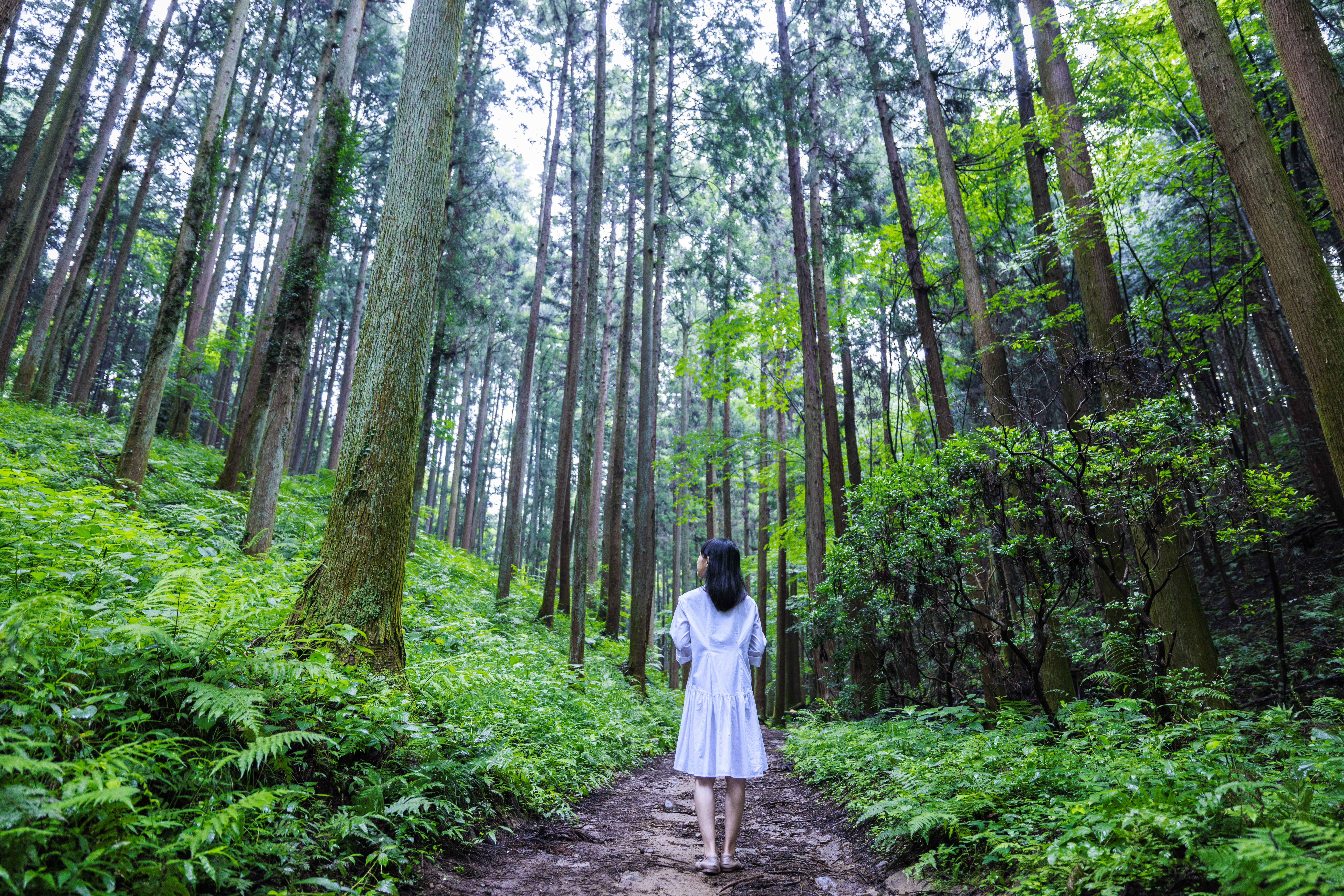Forests are enchanting places. They offer a full sensory experience—forget your worries as you soak in the scents and sounds of these peaceful natural sanctuaries. Whether you choose to wander aimlessly along a trail or meditate by a tranquil stream, immersing yourself in nature can do wonders for your mind and body.
The Healing Power of Nature
Mother Nature can sometimes be the best therapist. When life gets hectic, I often make my way to a forested trail to relax and recharge. In Japan, this practice is known as shinrin-yoku, meaning “forest-bathing.” I think the word itself has a beautiful ring and captures the concept perfectly—the act of soaking yourself in nature as if it were a bath and coming out anew. Many studies show that spending time in forests can nurture mindfulness and improve your overall well-being.
Over two-thirds of Japan are covered in woodland, making shinrin-yoku easily accessible even for urban dwellers. An excursion to the outskirts of Tokyo gave me the chance to unwind and fully appreciate the lush natural beauty of my home country.
The hot, wet summers of Japan nourish expansive groves of cedar, pine, and cypress, which look particularly enchanting after rainfall. The trail I visited sits under the shadow of towering cedars, and is dotted with patches of moss, delicate wildflowers, and mushrooms of all sizes. The soothing hum of cicadas, earthy aromas, and the fresh, dewy air all reminded me of the healing power of nature.
The Forest is Alive
A day in the forest can help you get in touch with your spiritual side. When I visit forests, I feel the life force of every tree—in fact, the entire forest is like a single living entity. Since ancient times, forests, mountains, and rivers have all been regarded as sacred places by Japanese people. Believed to be inhabited by deities, they have long been worshiped and protected by communities.
The most prominent types of wood—Japanese cedar and cypress—even appear in Japanese mythology and folklore. In the Nihon Shoki (“The Chronicles of Japan”), one of the oldest books in Japan, it is said that Japanese cedar came from the beard of a deity while cypress came from his chest. The deity went on to explain how each type of wood should be used—“Build ships with cedar and shrines with cypress.” It demonstrates that the Japanese people had a deep understanding of the properties of wood since ancient times.
Many mountains and forests in Japan are home to shrines and other relics that pay tribute to the spirits that live there. These humble structures tend to be built with wood, beautifully integrating into their natural surroundings. Ancient trees receive special veneration, often marked with sacred ropes known as shimenawa. This reverence for woodlands continues in Japan today, as communities strive to keep their natural environments pristine and healthy.
Keeping Forests Flourishing for Future Generations
Taking care of our surroundings is at the heart of my philosophy. This can apply to your house, your neighborhood, and the larger environment. This concept is reflected in the way Japanese communities have planted and tended to forests over the years, nurturing a harmonious relationship with nature.
Protecting the natural environment is now more important than ever. I think forestry practices in Japan can serve as a great role model for sustainability. I learned that selective culling and harvesting helps promote the natural cycle—it allows more sunlight to reach the ground surface, encouraging the growth of vegetation in the understories. This can help nurture biodiversity and prevent overcrowding, leading to healthier trees and forests.
We can even bring a piece of the forest into our daily lives, as many of these carefully tended trees eventually become lumber. Japanese wood is prized for its outstanding beauty and versatility. It is seen as an eco-friendly resource since foresters put so much effort into sustaining the natural cycle.
It’s important to take time to reconnect with nature, not just for our own well-being, but to remind us of how crucial it is to keep the natural environment strong and healthy for future generations.








